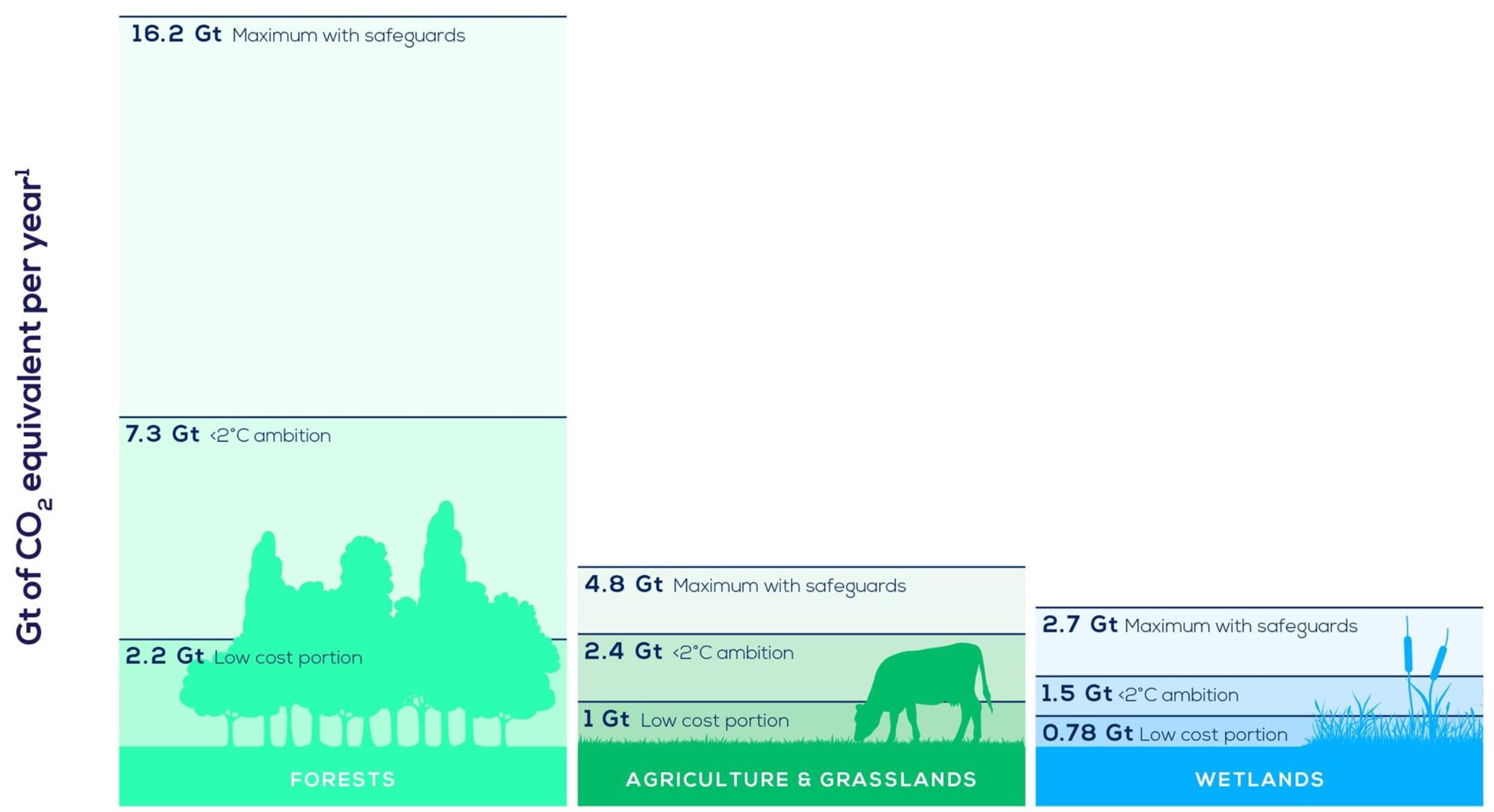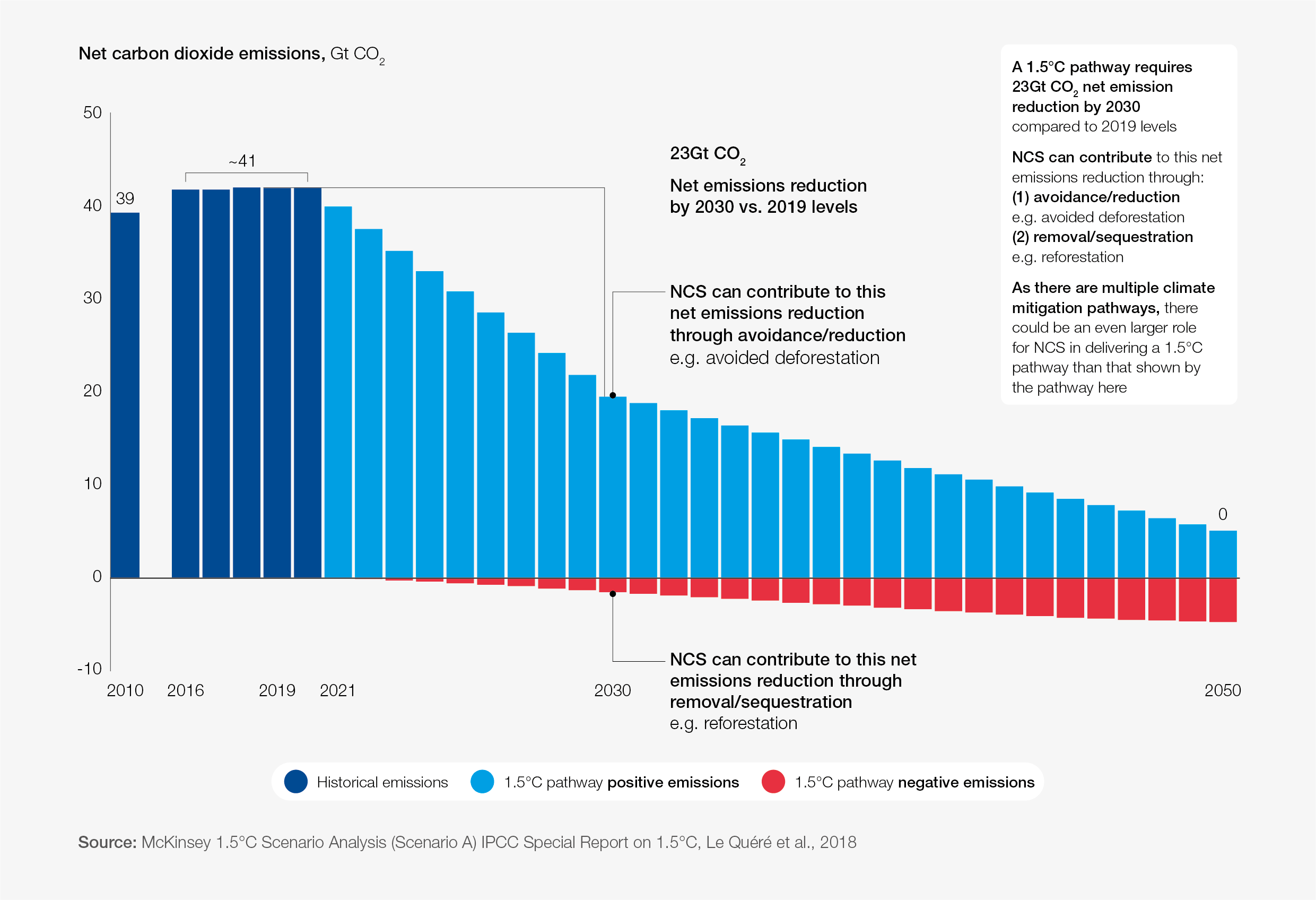What are natural climate solutions?

Here's why we need natural climate solutions – and how we can unlock the finance needed to scale them up.
Image: REUTERS/Lucas Landau
Stay up to date:
Road to COP26
Listen to the article
- Natural climate solutions done well can help address the twin crises of climate change and biodiversity loss.
- Significant investment is needed to scale up NCS as well as measures to increase confidence in their implementation.
- Ahead of COP26, the Natural Climate Solutions Alliance is working to unlock large-scale finance for NCS.
Whether you’re in Germany or Belgium, California or Siberia, it’s impossible not to notice that extreme weather events are becoming more frequent – and more destructive.
Extreme heat and catastrophic floods and fires are not only dangerous for humans, they’re also devastating ecosystems – from forests to farmland to coral reefs. This devastation, in turn, causes further damage to the economies and societies that depend on them.
Take, for example, recent forest fires in Siberia – one of the coldest regions in the world. The “unprecedented” blazes have not only destroyed more than 5,700 square kilometres of woodland but have also released more than 65 megatonnes of carbon and forced residents to stay indoors due to dangerous air quality.
Another example: coral reefs. They’re home to about one-third of known ocean species, but are rapidly disappearing due to climate change. This is, of course, harmful to the species that live in them, but also to economies that depend on reefs for food, tourism and flood mitigation.
And we can’t forget the Amazon – once the “lungs of the world” but now emitting more carbon than it absorbs as deforestation has taken its toll.
The linked and compounding crises of climate change and the acceleration of the destruction of nature are now our well-documented reality on Earth. But there are strategies available to us that can allow us to address both at the same time, and generate significant, additional environmental, social and economic benefits – through natural climate solutions.
However, while natural climate solutions (or NCS) are critical to realizing our climate goals – alongside rapid decarbonization – there is work to do to scale them up.
COP26, taking place 31 October to 12 November in Glasgow, Scotland, is considered by many as the last chance to get climate change under control. While it’s true that we only have a few years left – until the 2030 deadline to reach net zero, and until it’s simply too late to undo the damage – this moment presents an important opportunity for governments, global corporations and NGOs to come together to scale climate mitigation and adaptation strategies.
What are natural climate solutions?
NCS are actions that avoid greenhouse gas emissions and increase carbon storage in forests, grassland and wetlands. Well-known examples include forest conservation, restoration and management. Restoration not only returns forests to a healthy state, but also increases the amount of carbon sequestered, improves biodiversity and the quality of soil and water in the ecosystem, and provides economic benefits for communities that depend on that forest.
NCS can provide around 30% of the emissions reductions needed to limit global warming to 1.5° or 2° C, says Nature and Net Zero, a report published by the Forum in partnership with McKinsey & Co. These reductions can be realized directly by governments and companies, or through the purchase of carbon credits on a tradeable market, which allows more stakeholders to participate, while generating investment for more NCS activities.

Here are a few examples of natural climate solutions in action:
- Amazon is investing $100 million to conserve and restore forests, wetlands and grasslands around the world. In partnership with The Nature Conservancy, specific projects include $10 million to help family forest owners in the eastern United States sequester carbon, and €3.75 million to help European cities (starting in Berlin) promote biodiversity, reduce urban heat islands and improve storm water management.
- As part of its commitment to end deforestation in its cocoa supply chain, Nestlé is investing in forest restoration in Ghana and Côte d’lvoire. So far, the company has distributed millions of trees and trained more than 10,000 regional farmers on the importance of protecting forest and agricultural best practices.
- Walmart has committed to help protect, manage or restore at least 50 million acres of land and 1 million square miles of ocean by 2030. Specific actions include preserving at least 1 acre of natural habitat for every acre developed by the company in the U.S.
- Apple and Conservation International are partnering to preserve a 27,000-acre mangrove in Colombia – the first fully accounted carbon credit mangrove in the world.
Why now?
In 2010, natural climate solutions accounted for just 5% of carbon credits. Now, they account for 40%.
“Tradeable voluntary markets form a significant source of investment in NCS today,” says Natural Climate Solutions for Corporates, guidance published by the Natural Climate Solutions Alliance, co-convened by the Forum and the World Business Council for Sustainable Development (WBCSD).
“Yet whilst voluntary demand for NCS credits has grown rapidly in recent years, voluntary carbon market investment of ~$170M in 2019 is small relative to the estimated $10-100B needed to realise the true mitigation potential of NCS by 2030,” the guidance continues.
Significant investment is needed to scale up Natural Climate Solutions – especially in forest frontier regions and the Global South – and build international acceptance and understanding of carbon markets.
“However, many corporates recognise that investments in NCS carry uncertainty and risk. The climate benefits are clear, but finding and investing in high quality projects and jurisdictional programs that maximize co-benefits and limit potential negative impacts is not always easy,” continues NCS for Corporates. “Furthermore, continued debate about the role of NCS in climate change strategies by NGOs and regulators risks creating confusion and uncertainty for corporate actors looking to invest.”
This is why “robust rules that ensure high environmental integrity for international market mechanisms should be broadly applicable, eliminating any need for sector-specific provisions.” The critical conversation at COP26 will be coming to an agreement on Article 6 of the Paris Agreement, which covers international transfer of mitigation outcomes (ITMOs) – or international carbon markets. The international community has so far failed to agree on the rules governing an international carbon market, but observers are hopeful there are enough countries that now want to move this along.
What is the World Economic Forum doing on natural climate solutions?
What is the World Economic Forum doing?
Unlocking large-scale carbon finance for NCS, whether through voluntary or compliance action, requires close collaboration between governments, businesses, investors and civil society. As the international organization for public-private collaboration, the Forum is in a unique position to help, especially when working in tandem with global experts and initiatives.
The Forum’s Climate and Nature team published "Nature and Net Zero", a report in collaboration with McKinsey & Co., outlining five actions to accelerate NCS implementation and unlock markets.
The NCS Alliance is a multi-stakeholder group committed to identifying opportunities for and barriers to investment in NCS and carbon markets. As a platform for knowledge-sharing and technical capacity building, the NCS Alliance released Natural Climate Solutions for Corporates, guidelines for planning a credible climate strategy that includes NCS, defining the quality of NCS credits and communicating about these strategies.
Additional World Economic Forum initiatives that touch on Natural Climate Solutions include:
- 1t.org, which aims to help the global movement to conserve, restore and grow 1 trillion trees by 2030.
- Nature Action Agenda, which aims to halt biodiversity loss by 2030.
- Tropical Forest Alliance, a global public-private partnership to realize sustainable rural development based on reduced deforestation and sustainable land use management in tropical forest countries.
In addition, the Forum is part of an international mobilization of non-state actors to deliver sectoral decarbonization commitments at COP26, contributing to both the Race to Zero Dialogues and FACT Dialogues.
Yes, when it comes to nature loss and climate change, the situation is dire – but there’s no reason for doom and gloom quite yet. We’ve come together to solve global crises before – and with a critical mass of governments and businesses accepting the reality that climate change is a problem we must solve by 2030, we have the momentum to change course.
Don't miss any update on this topic
Create a free account and access your personalized content collection with our latest publications and analyses.
License and Republishing
World Economic Forum articles may be republished in accordance with the Creative Commons Attribution-NonCommercial-NoDerivatives 4.0 International Public License, and in accordance with our Terms of Use.
The views expressed in this article are those of the author alone and not the World Economic Forum.
Forum Stories newsletter
Bringing you weekly curated insights and analysis on the global issues that matter.
More on Forum InstitutionalSee all
World Economic Forum
May 16, 2025
Victoria Masterson, Stephen Hall and Madeleine North
March 25, 2025
Lorez Qehaja
March 19, 2025








